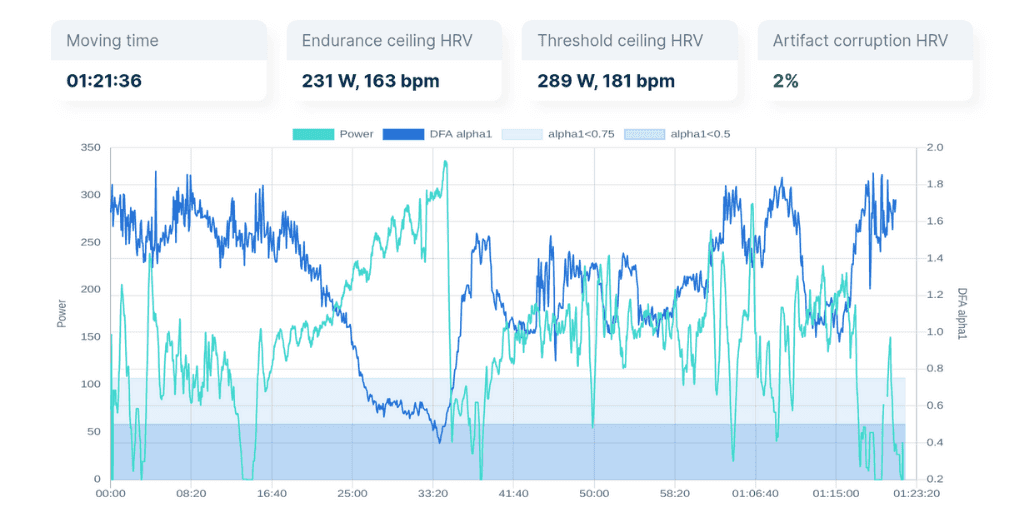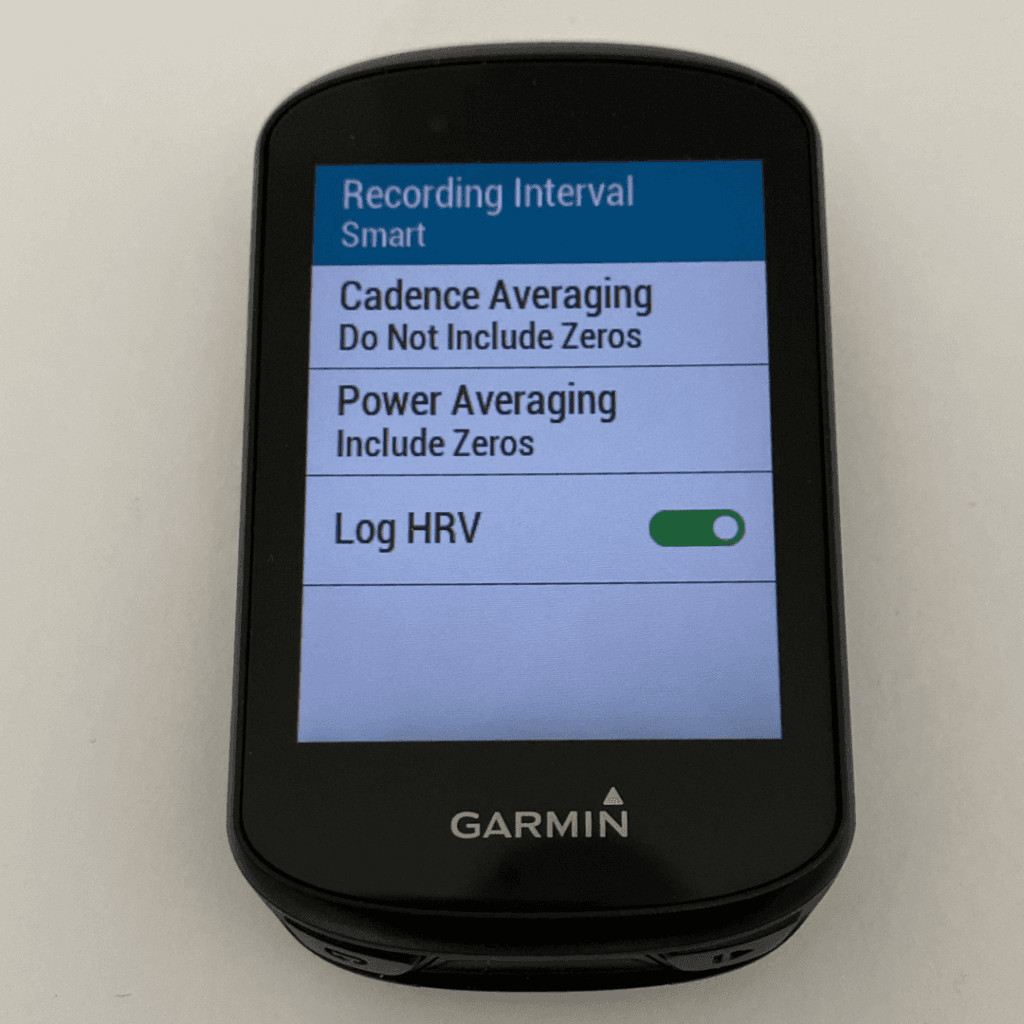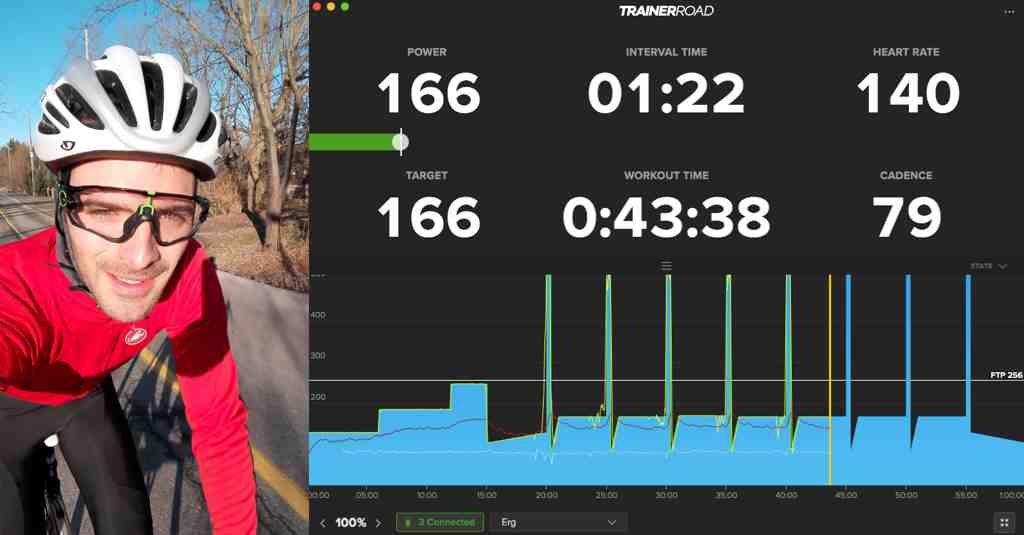
DFA alpha 1 is a heart rate variability (HRV) metric that allows tracking of the aerobic and anaerobic threshold. We explain the breakthrough potential of this new metric and how you can track your DFA alpha 1 thresholds with the AI Endurance app, Garmin and Zwift.
TLDR: In short, DFA (detrended fluctuation analysis) alpha 1 measures the noise spectrum of your heart. As you ramp up the intensity of a workout and your heart has to work harder, the kind of noise - which the value of DFA alpha 1 represents - changes. Recent research has shown that DFA alpha 1 crosses below 0.75 at your aerobic threshold [1] and below 0.5 at your anaerobic threshold [2]. For a more detailed explanation, check our in-depth blog post about DFA alpha 1.
DFA alpha 1 might prove to be a groundbreaking advancement to correctly set our training zones and track fitness. It only requires you to wear a heart rate monitor that tracks HRV (Polar H10 recommended). This way, you will be able to
Imagine being able to detect your fitness level during most activities that are hard enough to cross either threshold, without even thinking about fitness testing. This is what AI Endurance does.

You can use real time logging of HRV data as well, see for example the HRV Logger by HRV4Training (Android and iOS) or FatMaxxer (Android). Your DFA alpha 1 data is available for each activity under "View Analysis" for your past activities in the AI Endurance Dashboard.
We attempt to automatically detect your thresholds for any activity with HRV data if the ramping is sufficiently slow. For the aerobic threshold this means at least 4 min of continuously decreasing DFA alpha 1 past 0.75. For the anaerobic threshold, we need at least 6 min of continuously decreasing DFA alpha 1 past 0.5.
We also detect thresholds via clustering: a cluster threshold is the average of all pace/power values recorded during the first 30 minutes of an activity with DFA alpha 1 values close to 0.75 (0.5). Generally, cluster thresholds are more abundant than ramps.
Our AI automatically takes into account the detected thresholds from ramps and clustering for your performance predictions. No more fitness testing anxiety and fatigue - focus on your training plan and we’ll detect your thresholds automatically over time and keep your digital twin up to date.
We have also created dedicated ramp tests for cycling and running in the AI Endurance app. These make it as easy as possible for you to accurately test your DFA alpha 1 thresholds with Garmin and/or Zwift. Simply go to your AI Endurance Apps page and either
In both cases, you need Garmin Download to be connected to AI Endurance.

The aerobic threshold sets the upper bound of your Endurance training zone. Conversely, the anaerobic threshold sets the upper bound of your Threshold zone [4].
We automatically keep track of your training zones over time. As your fitness evolves, we notify you if your DFA alpha 1 data indicates an update to your zones might be warranted.

In this post, we explain how to use AI Endurance’s cycling training plan that we generated for Paris to Ancaster, Canada’s biggest gravel racing event. The plan includes detailed workout instructions. For indoor cycling, we show how to use AI Endurance with Trainerroad and Zwift.

We recap the results of following AI Endurance’s cycling training plan that saw our FTP grow according to AI Endurance’s predictions, following the instructions on how to improve FTP.

Grant Paling. I’ve been writing for a while now for AI Endurance, using the product as an ambassador but also to really try and ask myself - is it really working? Am I getting the results I want?

When it comes to triathlon training, nutrition plays a vital role in fueling your performance and optimizing your results. To help you reach peak performance, we have developed an advanced AI meal plan that takes into account your unique requirements, respects the calorie cost of your workouts, and accommodates your dietary preferences. With the power of evidence-based nutrition models, we ensure that your triathlon meal plan is tailored to support your goals.